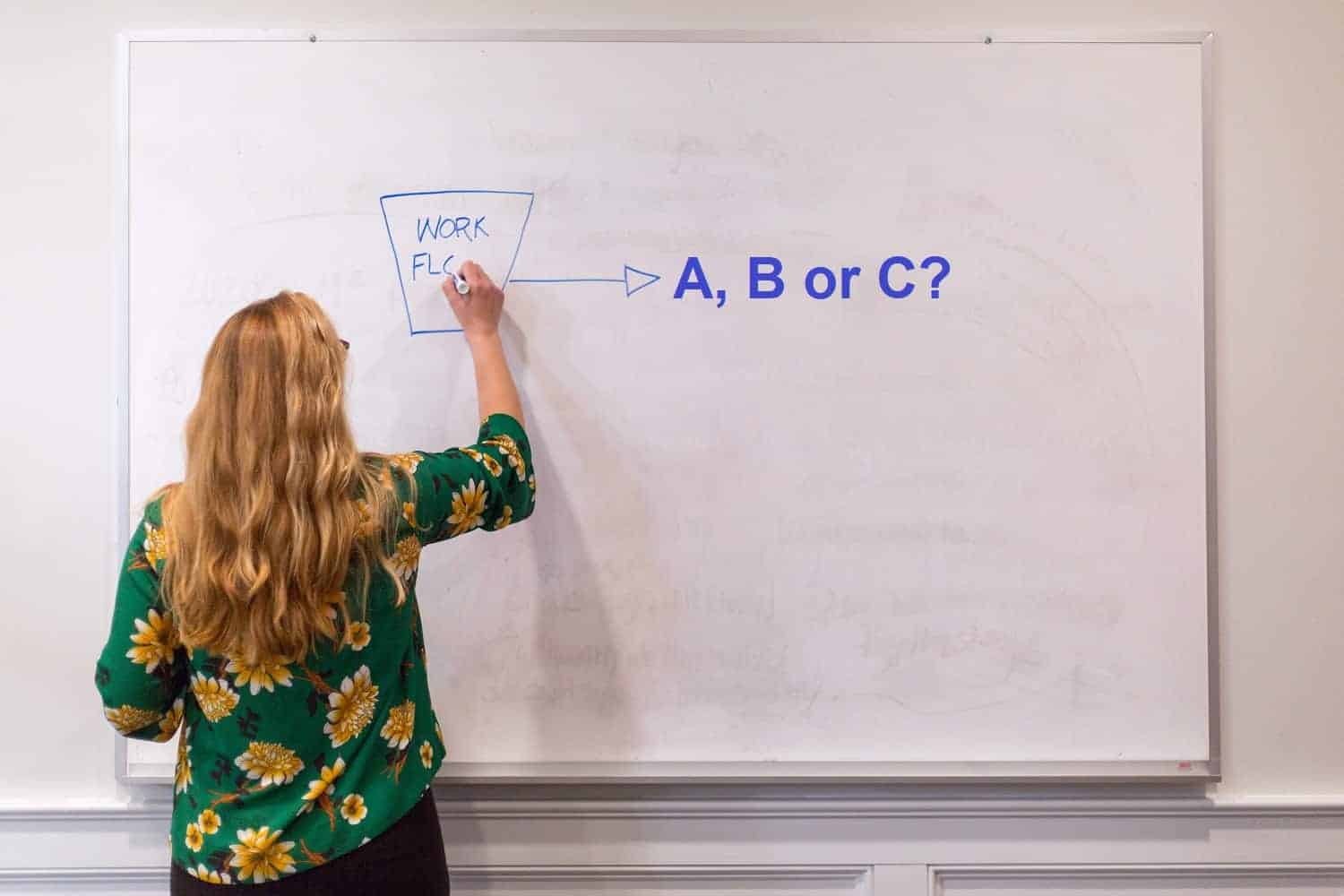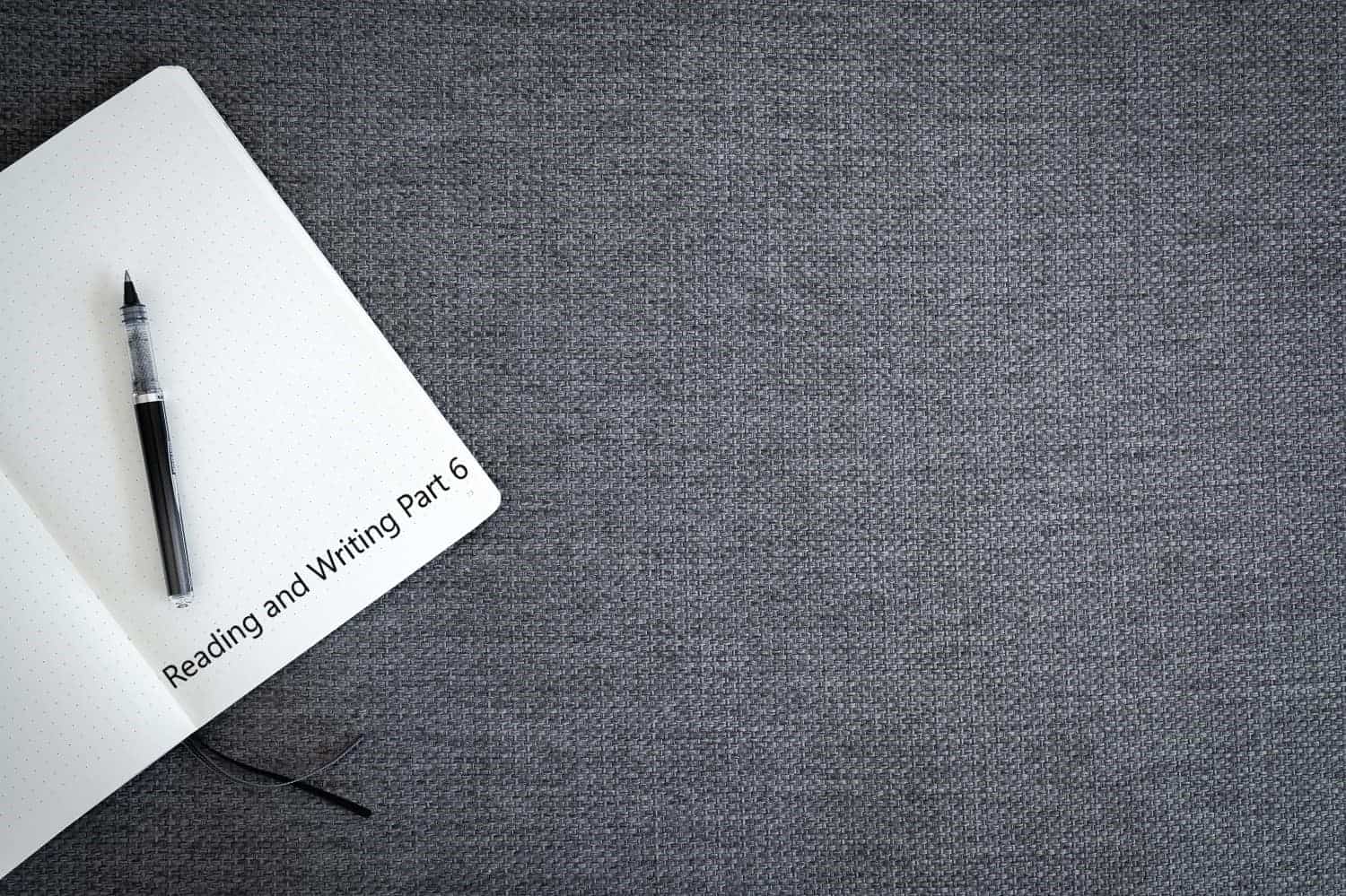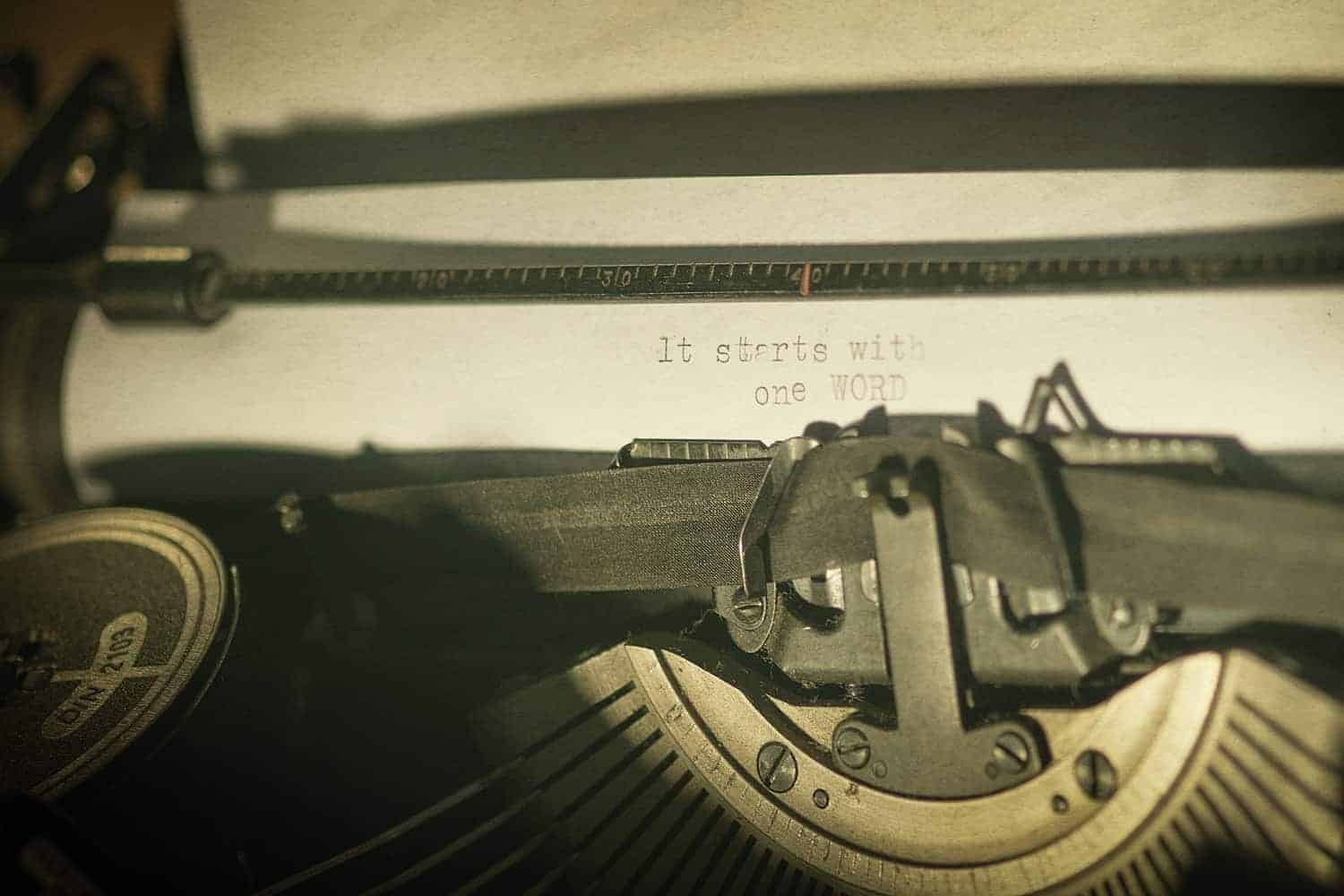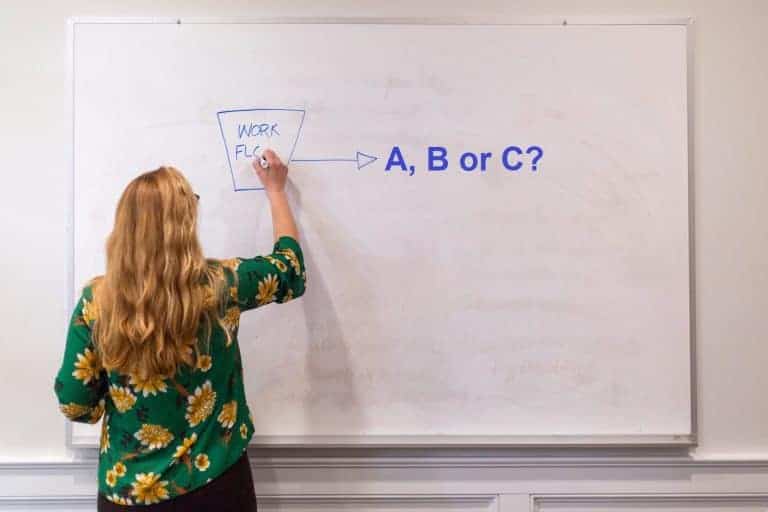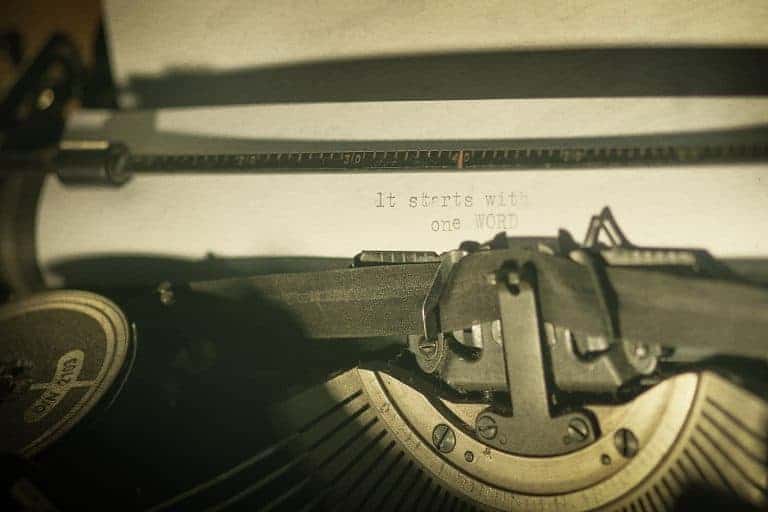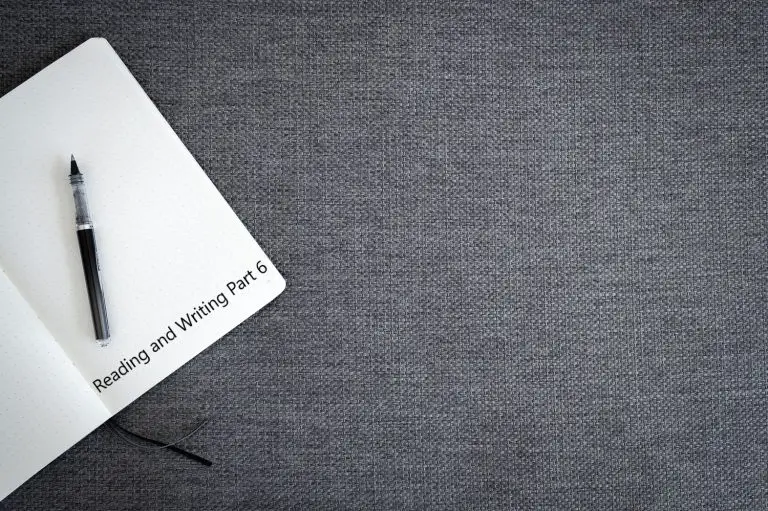Reading and Writing Part 1
In this article, you will learn everything you need to know about A2 Key Reading and Writing Part 1. I am going to show you what the task looks like, some of the biggest problems with this part and how you should do it.
If all of this sounds interesting to you, keep reading.
What do you have to do in Part 1?
3-option multiple choice: You have to read six short texts like text messages, notices, signs and other real-life examples, and understand the main meaning of these texts. There are three possible answers A, B and C and you need to choose the option that gives you the meaning of the text.
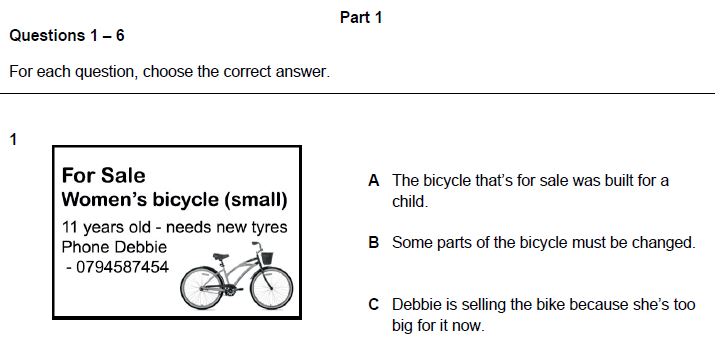
You can see that the text on the left is super short as well as the three possible answers on the right.
Again, you have to decide which of the three statements A-C is fully true and matches the meaning of the text.
When you finish the task, you have to transfer your answers onto an answer sheet. You get this sheet at the beginning of the test and all your answers need to be on it when you finish the exam.
What is difficult about Part 1?
In every part of Reading and Writing, there are some bigger problems that I often see with my own students. In Part 1, we can find one thing that is difficult, but if you continue reading, you will also find out what you can do to make it easier.
The answers are there to confuse you
In all the different Cambridge English exams, confusing answer options are one of the main reasons why students lose marks. Cambridge designs the questions and answers so they confuse you, but if you are careful, you will be able to stay relaxed and find the correct option.
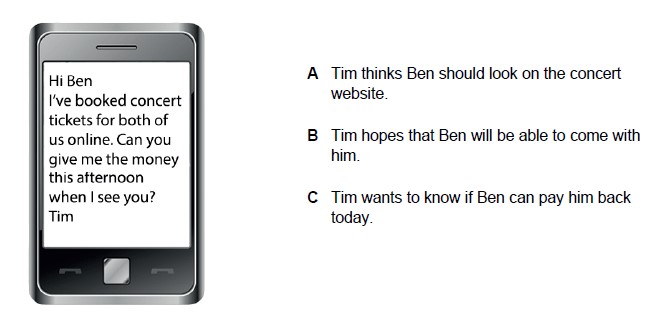
In the example above, there is a text message that Tim sent to Ben and the three possible answers A, B and C. Sentence A talks about a website, B about Tim and Ben going to the concert together and C about Ben paying Tim back today.
When we look at the text message, we can find information that matches all three, for example, there is the word ‘online’ (similar to ‘website’ in option A), the phrase ‘when I see you’ (‘will be able to come with him’ in option B) and ‘give me the money’ (‘pay him back’ in option C).
Obviously, only one answers is correct so you have to be very careful because you don’t want to get confused.
Tips and strategies for Reading and Writing Part 1
After we’ve looked at the biggest problem with Reading and Writing Part 1, I am now going to show you how you can do the task in the best way possible so you can get a lot of marks and save time.
General tips
For the different reading tasks in A2 Key, I definitely recommend practising reading. You can find interesting books, magazines and articles at any library and online or if you go to school, ask your teacher if they have some stories in English.
With just 5-10 minutes per day, you can already improve a lot. Start practising early and you can get much better by the time you take the exam.
Secondly, think about taking classes. A good English class can help you even more than a little bit of reading every day. With a professional and experienced teacher, you can learn strategies like the ones I’m showing you in this article and you have a person who can answer your question and help you with your English-language problems.
Follow a plan
One of the most important things about A2 Key (and all the other Cambridge exams) is to know exactly what you have to do in every task. I always tell my students to make a plan that they memorize and follow every time they practise.
For Reading and Writing Part 1, a plan could look like this:
- Underline the keywords
- Analyse the keywords and choose the correct answer
- Repeat with the other texts
In the following sections, I’m going to explain the different steps in more detail.
Underline the keywords
The first step for you is to look at the questions and underline the most important words. Then, you look at the text and underline the parts that match the topics in the questions.
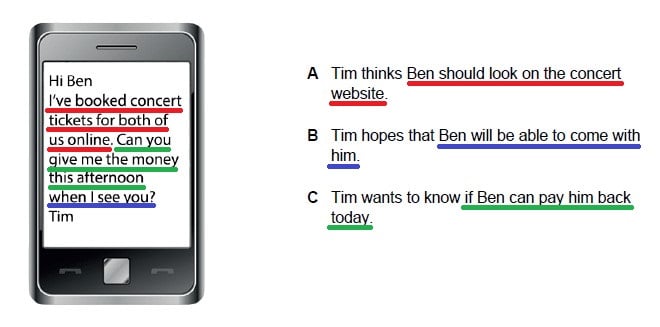
In our example, the questions talk about three different parts of the text (red, green and blue).
Analyse the keywords and choose the correct answer
We now have to check if the parts with the same colour also have the same meaning.
First of all, the red parts are not the same because in the text Tim has booked the tickets, but in option A it says that ‘Ben should look on the concert website’.
Secondly, the blue parts are very similar, but in the text Tim says ‘when I see you’. That means that Ben is definitely coming to the concert with Tim. In option B, however, it says that ‘Tim hopes’ for Ben to come. Again, that is not the same.
Finally, both green parts talk about Ben giving back money to Tim ‘this afternoon’ or ‘today’, which is the same thing, so option C must be correct.
Repeat with the other texts
As I said before, there are six texts that you have to go through so simply repeat the first two steps of the plan with the other texts. Underline the keywords and analyse them so you can find the correct option A, B or C.
Other tips
The last thing I would like to recommend is to check your timing for this task. In Reading and Writing, you have only 60 minutes to complete seven tasks and to transfer all your answer onto an extra answer paper.
That’s why it is really important for you to know how much time you need for the different tasks. You can then practise the ones that you are slower with and save time in the future.
Summary
A2 Key Reading and Writing Part 1 tests if you can understand many different types of short texts. You have to be careful because Cambridge tries to confuse you with the different answer option, but you can use the tips and strategies in this article to make less mistakes and become faster.
I hope you can use my advice for your practice and in the exam.
Lots of love,
Teacher Phill 🙂




